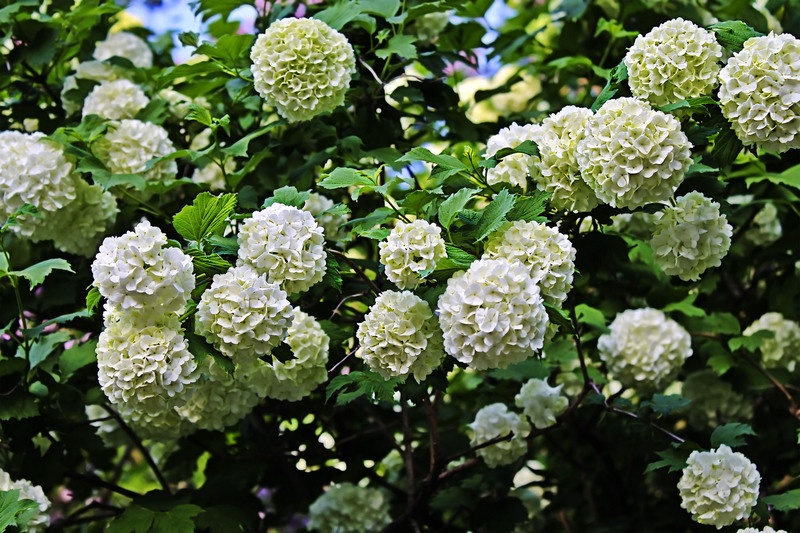Elevate Your Outdoor Areas with Zen Gardening Techniques
Posted on 11/06/2025
Elevate Your Outdoor Areas with Zen Gardening Techniques
Unlock tranquility and artistry in your backyard, patio, or garden by embracing Zen gardening techniques. Zen gardens, also known as Japanese rock gardens or karesansui, go beyond mere landscaping--they are a path to mindfulness, subtle beauty, and harmony with nature. In this comprehensive guide, discover how to transform your outdoor spaces into serene sanctuaries by mastering the principles of Zen gardening.
What is a Zen Garden?
A Zen garden is an ancient Japanese garden style cultivated for meditation, contemplation, and effortless aesthetic pleasure. Unlike typical lush gardens, Zen gardens favor simplicity and symbolism, utilizing rocks, sand, gravel, moss, and minimal greenery arranged with intentionality.
- Rocks represent mountains or islands.
- Sand or gravel symbolizes water or emptiness.
- Moss and pruned plants imply nature's resilience and beauty.
The core idea is an uncluttered, balanced composition--ma, the concept of negative space, is as important as placed elements. Zen gardens invite you to pause, observe, and connect with nature's rhythm, making them an exceptional choice for anyone wishing to elevate their outdoor areas.

Benefits of Zen Gardening Techniques for Outdoor Spaces
- Stress Reduction: The minimalist, meditative layout helps calm the mind.
- Low Maintenance: Zen landscapes require less water and minimal pruning.
- Year-Round Beauty: Rocks and evergreens provide visual interest every season.
- Increased Property Value: A unique, peaceful garden appeals to homebuyers.
- Encourages Mindfulness: Maintaining and viewing a Zen garden enhances awareness and relaxation.
Essential Principles of Zen Garden Design
To successfully elevate your outdoor spaces with Zen gardening techniques, it's important to observe the underlying philosophies:
1. Simplicity (Kanso)
Minimize clutter. Each element and space should serve a purpose. In Zen gardening, less is indeed more. Choose a few well-placed rocks or plants rather than overcrowding.
2. Asymmetry (Fukinsei)
Unlike Western symmetry, Zen design celebrates natural, visually interesting imbalance. Place rocks, plants, and decorations off-center or in uneven groupings to mimic nature's unpredictability.
3. Naturalness (Shizen)
Strive for effortless, organic arrangements. Avoid artificial patterns, letting materials and plants appear as they would in the wild.
4. Balanced Space (Ma)
Leave some areas empty or open. This "negative space" creates a sense of peace and highlights the beauty of what is present.
5. Subtlety (Yugen)
Design your Zen garden with layers that suggest more than they show. The overall effect should inspire curiosity, imagination, and tranquility.
Key Elements to Elevate Your Outdoor Spaces with Zen Gardening
- Rocks and Stones -- Form the backbone of the landscape. Their placement is symbolic and meditated upon, often representing islands or mountains.
- Sand or Gravel -- Raked in mesmerizing patterns to represent water, ripples, or flow. These patterns can be changed to refresh the scenery or suit your mood.
- Moss -- Adds lushness and rich color, thriving in shady spots and symbolizing endurance.
- Water Features -- Though not necessary, a small pond, fountain, or basin can introduce tranquil sounds and visual cooling.
- Sparse Plantings -- Use pruned evergreen shrubs, bamboo, ferns, or Japanese maples for softness and seasonal change.
- Bridges, Lanterns, and Ornaments -- Opt for minimal, natural-looking additions in stone or wood to enhance cultural depth.
Step-By-Step: How to Design a Zen Garden
1. Select the Space
You don't need a large outdoor area--Zen gardens thrive in small spaces too! Choose a quiet zone in your yard, patio, or even create a container Zen garden on your balcony.
2. Prepare the Ground
- Clear the area of weeds, debris, and level the soil if necessary.
- Laying weed-suppressing fabric ensures a low-maintenance garden.
3. Add Borders
Frame your space using natural stone, timber, or bamboo fencing. Borders contain gravel and define your meditative area.
4. Place Rocks Thoughtfully
- Select stones of varied size and texture.
- Group them in odd numbers--threes and fives work well--and partially bury them for a natural look.
- Consider the symbolic meaning of their arrangement (islands, mountains, etc.).
5. Spread Sand or Gravel
Pour a 2- to 3-inch layer of sand or fine gravel across the space. Use a rake (a specialized Zen rake works best) to craft flowing, rippled patterns that imitate the movement of water or waves.
6. Add Moss and Minimal Plants
- Strategically tuck moss between stones or along shaded areas for visual interest.
- Use low-maintenance shrubs, bamboo, or dwarf trees for a lush touch.
7. Include Ornaments Selectively
Finish your design with simple stone lanterns, water basins, or a curved wooden bench. Remember--subtlety is key.
Zen Gardening Techniques for Modern Outdoor Living Spaces
Gravel Raking for Meditation
One central Zen gardening technique is the regular raking of sand or gravel. The practice is both a creative outlet and a meditative process:
- Creates dynamic, impermanent beauty--patterns can change with your mood.
- Encourages mindfulness--the act of raking brings you into the present moment.
Introducing Water Features
While traditional Zen gardens may omit water, modern designs sometimes incorporate small fountains, ponds, or bamboo water spouts to enhance tranquility. Water introduces calming movement and sound, elevating the sensory experience.
Indoor Zen Garden Variations
- Tabletop Zen Gardens: Miniature sand trays with rocks and tiny rakes offer mindfulness breaks at home or work.
- Potted Moss Gardens: Simple containers of lush moss bring Zen indoors--ideal for urban dwellers.
Choosing the Right Plants for Your Zen Garden
While Zen gardening is famous for its minimalist planting, carefully chosen flora can elevate outdoor areas with subtle color, form, and texture. Consider the following options:
- Moss: Loves shade and moisture; use for ground cover or between rocks.
- Japanese Maple: Brings fiery autumn color and delicate, lacy leaves.
- Bamboo: Tall varieties create privacy; dwarf types thrive in pots.
- Evergreen Shrubs: Azaleas, camellias, and boxwood offer structure and year-round greenery.
- Ferns: Provide lushness and a soft contrast to stone features.
- Ornamental Grasses: Movement and texture for sunlit spaces.
Maintaining Your Zen Garden
Zen gardens are designed with low-maintenance beauty in mind, but they do require regular, mindful care:
- Rake regularly: Refresh gravel or sand patterns to keep the space dynamic and meditative.
- Lawn and weed control: Remove unwanted growth promptly to preserve the intended minimalism.
- Prune wisely: Shape shrubs and small trees to maintain clean, elegant lines.
- Refresh moss: Keep it moist and trim as needed for fullness.
- Clean ornaments and borders: Remove debris or dirt for visual purity.
Illuminating Your Zen Outdoor Area
If you wish to enjoy your Zen garden oasis after dusk, incorporate soft, understated lighting:
- Stone lanterns: Traditional and atmospheric, these create points of focus and safe walkways.
- LED uplights: Highlight feature rocks or trees without harsh glare.
- Solar path lights: Subtly illuminate gravel paths or entryways.
Remember, lighting in a Zen outdoor area should evoke tranquility--avoid bright or multicolored bulbs that detract from the ambience.
Elevate Any Outdoor Space: Zen Gardens for Every Setting
- Balcony or Small Patio: Use large containers, bowl-shaped troughs, or small trays for an urban Zen nook.
- Suburban Yard: Dedicate a corner or side area to Zen principles, or use a Zen-inspired border around a deck.
- Expansive Landscapes: Design winding paths, expansive raked gravel zones, or combine a water feature with traditional rock groupings.
- Commercial Spaces: Office courtyards or building entrances benefit from Zen's calming presence, reducing stress for employees and visitors.
Tips for Creating a Truly Tranquil Zen Garden
- Use Simple, Natural Materials: Wood, stone, bamboo, and unpainted ceramics reinforce organic harmony.
- Emphasize Vertical and Horizontal Lines: Layered stones, flat raked fields, and upright plants create contrast and balance.
- Muted Colors Are Best: Stick with monochromes or subtle variations--green, grey, brown--to encourage relaxation.
- Incorporate Sound: Wind chimes, bubbling fountains, or the crunch of gravel paths further engage the senses.
- Maintain Seclusion: Use screens, trees, or fencing to block unwanted views and noise.
- Honor the View: Orient seating or walking paths toward a focal point, be it a rock group, water feature, or borrowed landscape.
- Reflect Seasonality: Let fallen leaves or patches of snow complement your Zen garden, enhancing its connection to natural cycles.

Common Mistakes to Avoid When Designing a Zen Garden
- Overcrowding: Resist the urge to add too many elements; open space is essential.
- Ignoring Context: Let your Zen garden blend naturally with the surrounding environment, architecture, or local flora.
- Excessive Use of Color: Limit your palette. Choose subtle shades for serenity.
- Misplaced Ornaments: Too many statues or lanterns distract from simplicity; opt for one or two signature pieces.
- Narrow Paths: Paths should be wide enough for comfortable walking and peaceful observation.
Conclusion: Bring Balance and Beauty to Your Outdoor Retreat
By embracing Zen gardening techniques, you can elevate your outdoor areas into serene, stimulating environments--whether you have sprawling grounds or a modest balcony. Zen gardens teach us the value of simplicity, harmony, and contemplation. Through thoughtfully chosen rocks, raked gravel, mossy nooks, and the careful placement of plantings and ornaments, you'll create a timeless sanctuary that soothes the mind and inspires the spirit.
Ready to elevate your outdoor areas with Zen gardening techniques? Start small, be mindful, and let nature's quiet artistry guide your hand. In just a few hours or weekends, you'll craft a personal oasis that offers tranquility and grace for years to come.

